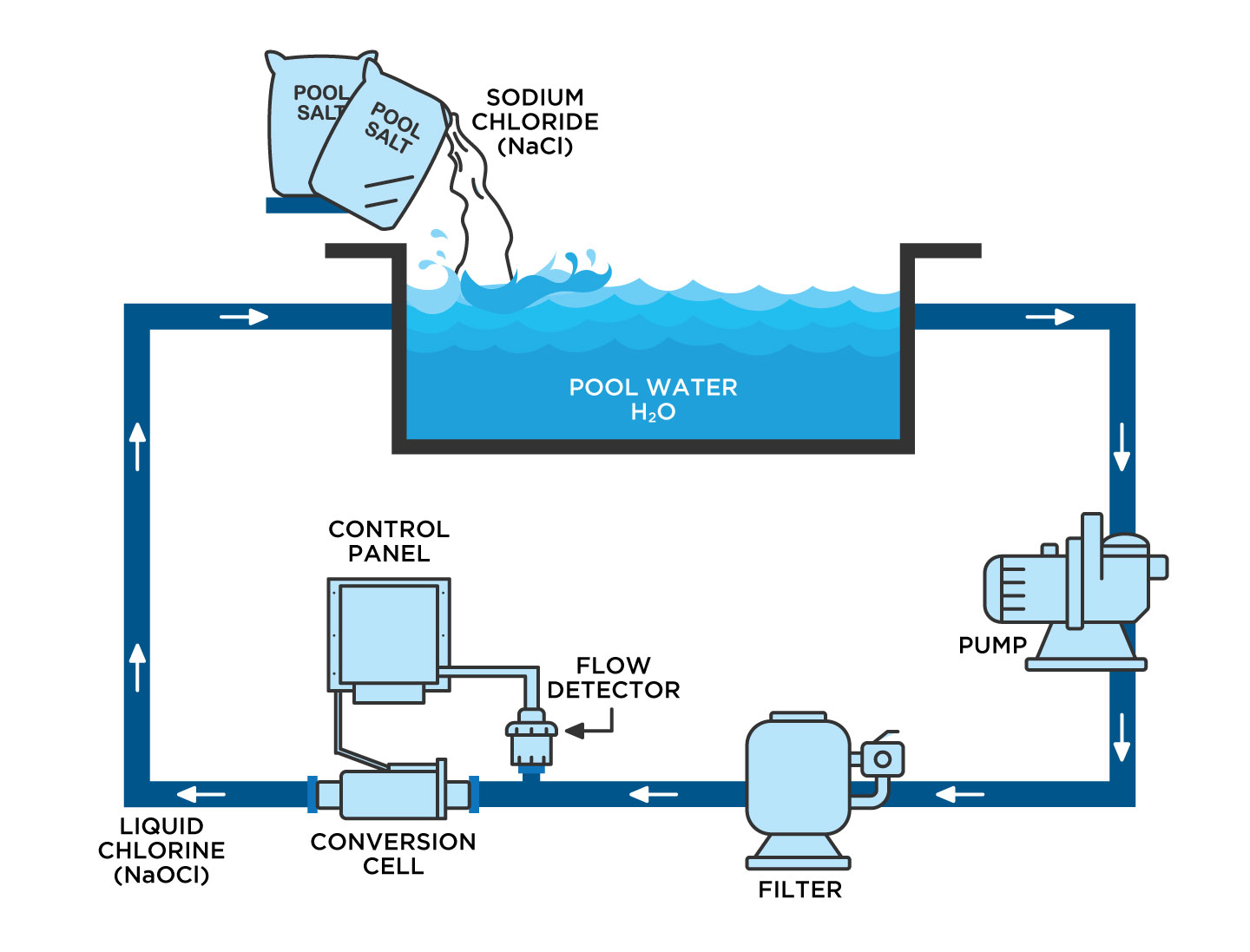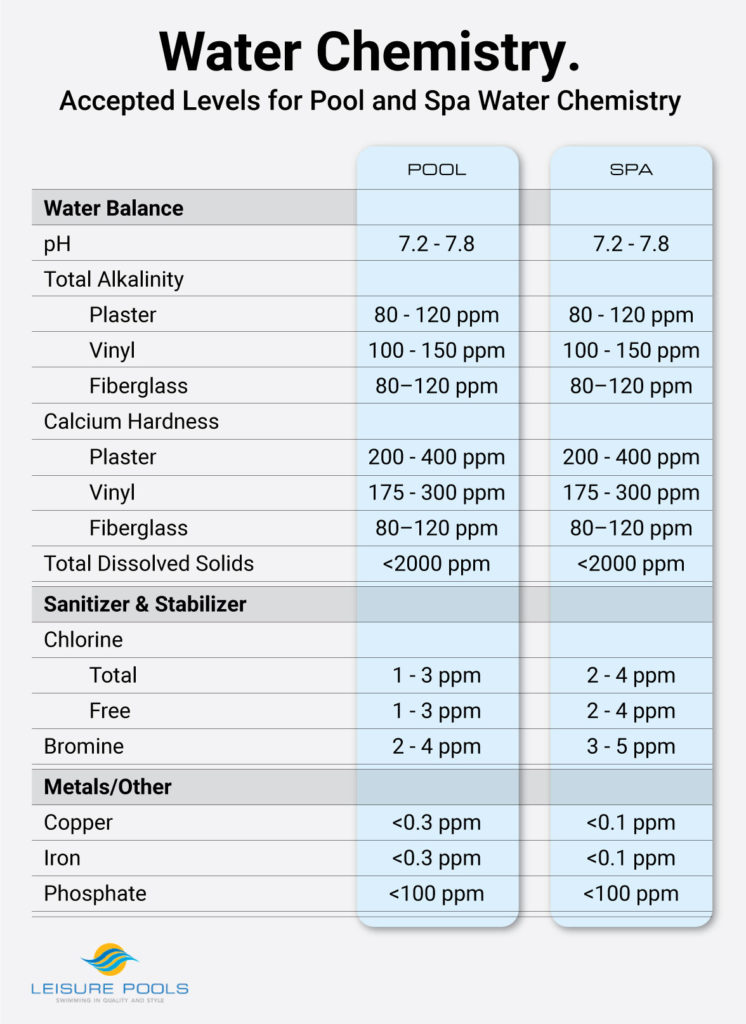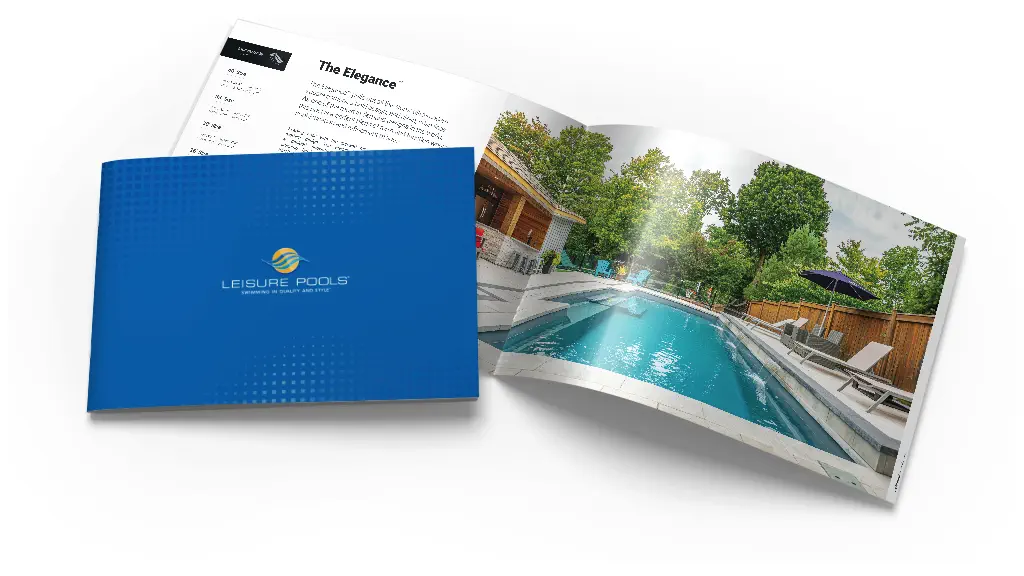
Definitive Guide to Salt Water Pools

Overview
- Salt Chlorinators: Perfectly Suited for Fiberglass Pools
- About Salt Chlorine Generators
- The Science Behind Salt Chlorination
- About Pool Water Salt
- Salt Chlorination FAQs
- 5 Myths About Salt Chlorination
- How Salt Chlorine Generators Work
- Types of Chlorine
- All About Salt
- Salt Water Pools Salt Cell Tips
- Finding The Right Salt Chlorinator
Salt Chlorinators: Perfectly Suited for Fiberglass Pools
Salt water pools are powered by salt chlorinators, also known as salt chlorine generators, and they’re all the rage for good reason. They deliver a luxurious swimming experience, while reducing the time it takes pool owners to maintain their swimming pools.
About Salt Chlorine Generators
Salt chlorine generators quite literally turn salt into chlorine for swimming pool water sanitization. They use electrolysis to create a pure form of chlorine from a small amount of ordinary salt. And the great news is that the salt is used over and over again.
The Science Behind Salt Chlorination
There are two components to a salt chlorinator: the salt cell that converts salt into chlorine and the control box that tells the salt cell when and for how long to produce chlorine.
Salt cells, also known as electrolytic converters, are installed on the return line of the pool’s plumbing. They must be installed behind the pump, filter and heater.
As a pool’s water passes through the salt chlorinator’s salt cell, a harmless electrical charge, generated by the control box, automatically converts the dissolved salt into chlorine. The newly chlorinated water is then dispersed evenly throughout the pool by the return jets. After the chlorine has safely chlorinated the pool’s water, it’s transformed back into salt. The process happens over and over, automatically.
About Pool Water Salt
The salt added to a swimming pool’s water continuously cycles between salt and chlorine indefinitely. It’s never consumed and it doesn’t evaporate. Therefore, swimming pool salt only needs to be replenished with backwashing, splash out, or rainstorm overflows.
Salt Chlorination FAQs
Does Salt Chlorinate Pool Water?
No. Salt doesn’t sanitize a swimming pool’s water, chlorine does. Salt or minerals in the form of magnesium chloride, potassium chloride or sodium chloride, when dissolved in the pool water, is converted by the salt chlorinator into chlorine. It’s the chlorine that sanitizes pool water.
Will My Water be Salty?
No. The amount of salt or minerals in your swimming pool’s water will be roughly the same as what is in a teardrop. When salt levels of salt water pools are properly maintained, there should be little to no taste. The salt passes through the chlorinator’s electrolytic plates to form chlorine, killing all contaminants that prevent bacteria and algae from forming.
Proper pool water salt range is 2,700 to 3,400 PPM (parts per million)
Salt chlorinators require a low concentration of salt (sodium chloride) – approximately a teaspoon of salt per gallon of pool water. The amount of chlorination required to sanitize a pool properly varies due to the pool size, bather load, rainfall, temperature and the overall pool cleanliness. We recommend using test strips for pool salt testing, as some electronic salt chlorinators do not always provide an accurate reading.
Will I Still Have to Purchase Store-bought Chlorine?
Sin salt water pools that maintain the proper chemistry management, NO.
Swimming pool salt chlorinators can reduce or eliminate the need for purchasing chlorine. Salt chlorinated pools will dramatically improve your swimming experience. The pool water is softer and less irritating to the eyes and skin of swimmers. As a result, many swimmers greatly prefer pools with salt chlorinators to pools using other forms of chlorination.
Are there Salt Chlorinator Cons?
Not all swimming pool structures are ideally suited for salt chlorination. Let’s compare.
Concrete Pools
Unfortunately, salt chlorinators are not ideal for concrete swimming pools. Salt chlorinators can be up to five times more abrasive than traditional chlorine on concrete surfaces. Although salt chlorinators can still be used with concrete swimming pools, they’ll require more frequent resurfacing — which is a very costly repair.
Vinyl Liner Pools
The metal walls can rust. Vinyl liner pool owners often use salt chlorination, but because of the rust factor it’s not ideally suited to this type of pool structure.
Composite Fiberglass Pools
The boating industry led the way with fiberglass – the most robust material for saltwater. The swimming pool industry followed suit but with significant refinements. The non-porous nature of composite fiberglass makes it ideal for swimming pools – especially those with salt chlorine generation. Their polished surfaces make them soft to the touch, impenetrable to salt, and algae has a tough time adhering to surfaces.
The Ideal Combination
Salt chlorination has become the leader in pool and spa sanitization for five good reasons.
1. Salt is a low-cost solution for keeping swimming pool water sanitized.
2. Salt reduces the time spent maintaining a pool’s water.
3. Salt delivers silky-soft water.
4. Salt won’t turn swimmers’ eyes red.
5. Salt won’t bleach swimsuits and towels.
What a nice solution – particularly when some of these minerals and salts can be so good for your family’s health just by being in the pool water. The result is pure, crystal clear, soft-feeling water and happy, healthy swimmers.
And, composite fiberglass swimming pools are designed and ideally suited for salt chlorination.
5 Myths About Salt Chlorination
Salt chlorination is the most popular method of swimming pool sanitization. However, despite their popularity, some myths have persisted. We’ve addressed some of these already, but they bear repeating.
Myth 1
You need to drain your pool when switching to salt chlorination.
False. No matter what type of chlorine you use, all you need to do is get your water tested and add salt. Your dealer will help you determine what you need after testing your water and evaluating your pool size. You DO NOT have to drain your pool water.
Myth 2
Salt is “the” sanitizer.
False. Your salt chlorinator converts salt into chlorine automatically – chlorine is the sanitizer. The salt used for pools is sodium chloride, the same ingredient in table salt that you add to food. For your salt chlorinator to operate most efficiently, the salt concentration must be within a specific range, typically about 3,000 PPM, about one teaspoon of salt per gallon.
Myth 3
Salt evaporates.
False. The salt in your pool doesn’t evaporate or degrade. It only needs to be replaced when a pool is drained, backwashed, or splash out.
Myth 4
A salt pool’s water is like ocean water.
False. Salt chlorinated pools have about 1/10 the salt concentration as the ocean. The salt levels in salt pools are about the same salinity as a human tear, and that’s why eyes aren’t irritated like they are after swimming in chemical chlorine-treated pools.
Myth 5
With salt chlorination, you no longer need balance water chemistry.
False. Maintaining the proper pH, total alkalinity, and water hardness are essential for every pool, whether or not it is salt chlorinated. As with any pool, you should continue to test and balance your water weekly. Alkalinity and pH can fluctuate, and it is also recommended that your cyanuric acid not be higher than 30ppm. Proper water balance helps protect pool equipment and bathers by making the chlorine more effective at destroying bacteria, viruses, and algae.
Myth 6
You need to wait 24 hours after turning on the controller to add salt.
False. You do not need to wait 24 hours after adding the salt to turn your salt controller on and plugging in the cell to the controller.
How Salt Chlorine Generators Work
Quite possibly, the best benefit of a salt-chlorine generator is that your pool and spa are chlorinated automatically, not manually.
The Science Behind The Technology
There are two components to a salt chlorinator: the control box and its salt cell, which is an electrolytic converter that installs on your system’s return line, behind the pump, filter, and heater. As pool water passes through the salt cell, an extremely safe electrical charge, generated by the control box, automatically converts the dissolved salt into fresh, natural chlorine. The newly chlorinated water is then dispersed evenly throughout the pool by the return jets, preventing algae and killing bacteria. After the chlorine has done its work keeping your pool sanitized, it is then transformed back into salt and then the process happens all over again. The salt cycles between salt and chlorine forever.
Salt chlorinators require a low concentration of salt (sodium chloride); approximately a teaspoon of salt per gallon of water. The correct salt level is comparable to a human tear and imparts no or little taste. The actual amount of chlorination required to sanitize a pool properly varies due to the pool size, bather load, rainfall, temperature, and the pool’s cleanliness.

Pool and spa water chemistry, along with proper filtration, is the key to clean, healthy water. It doesn’t matter if you have 100 or 1,000,000 gallons of water, the same balance levels and chemical types are required—only the quantity will vary. Everything that enters the body of water affects water balance: swimmers, rain, pollution, animals, and chemicals.
Chemical levels are different for every pool and can even vary within a swimming season. Every pool also develops a pattern each season. After observing how your pool reacts to different bather levels, rain, and the environment, you will get a handle on your pool’s chemistry pattern and what’s required to keep the water balanced.

Types of Chlorine
Your pool and spa’s water have two forms of chlorine – Free Chlorine and Combined Chlorine. Free Chlorine is what you add to your water, while Combined Chlorine is created when it reacts and combines with what’s floating in your pool’s water.
Free Chlorine (Good Chlorine)
Free Chlorine, the “good” chlorine, is the chlorine you add to your water to kill bacteria and viruses and to oxidize the contaminants in your pool and spa water. Your Free Chlorine level should be maintained between 1-3 PPM.
Combined Chlorine (Bad Chlorine)
When Free Chlorine combines with pool and spa water contaminants such as bacteria, body oils, suntan lotion, etc., it turns into Combined Chlorine.
Combined Chlorine is one of the leading causes of swimmer discomfort. So if you can keep it at bay, and keep your Free Chlorine at proper levels, between 1-3 PPM, you can reduce all the adverse side effects of chlorine.
Another leading cause of red eyes is poorly managed pH. The ideal pH range for swimming pool water is 7.0 – 7.8. The pH of our eyes is typically 7.2 – 7.4. So, when pH is kept at approximately the same level as your eyes, the side effects of burning red eyes are kept to a minimum. Chlorine’s ability to disinfect is also optimum at this level.
How to Destroy Combined Chlorine
Test your water regularly with a system that tests for Free AND Total Chlorine. Total Chlorine is simply the sum of the Free Chlorine and Combined Chlorine. So, if you test for Total and Free Chlorine, you can calculate the amount of Combined Chlorine by subtracting the Free Chlorine from the Total Chlorine (i.e., Combined Chlorine = Total Chlorine – Free Chlorine).
When Combined Chlorine is present, a shock treatment using either chlorine or a non-chlorine sanitizer will destroy it. This will raise your Free Chlorine level while diminishing chlorine odor and the likelihood of red eyes.
All About Salt
It’s essential to use only sodium chloride (NaCl) salt that is greater than 99% pure. Standard food quality or water softener salt and is usually available in 40-80 pound bags labeled “Coarse Solar Salt.” It is also acceptable to use water conditioning salt pellets; however, it will take longer for them to dissolve. NEVER use rock salt, salt with yellow prussiate of soda, salt with anti-caking additives, or iodized salt.
Salt Water Pools Salt Cell Tips
If you were told a salt chlorinator needs NO maintenance, sorry, but it’s not true. What is accurate, however, is that the general maintenance required for salt water pools is minimal.
It’s imperative to inspect your salt cell regularly and keep it free of scale. Scale is one of the most common challenges in saltwater chlorinator maintenance. It typically forms first on the salt cell plates, where it can remain undetected. Once scale forms, it lessens the salt cell’s effectiveness and life span, leading to premature cell replacement.
How much salt to add to your pool
The number of bags of salt is dependent upon how many gallons you have in your pool. Please talk to your dealer/installer and get the specific information available for your pool. Most salt bags come in 40 lb. sizes, but the number of bags you use will vary depending on the number of gallons you have.
Finding The Right Salt Chlorinator
If you are looking for a superior-quality salt chlorinator – look to our partner, the market leader Hayward Pool Products. Hayward offers a complete line of salt chlorine generators to suit your application, lifestyle, and budget.
Share This Story, Choose Your Platform!
Table of Contents
- Salt Chlorinators: Perfectly Suited for Fiberglass Pools
- About Salt Chlorine Generators
- The Science Behind Salt Chlorination
- About Pool Water Salt
- Salt Chlorination FAQs
- 5 Myths About Salt Chlorination
- How Salt Chlorine Generators Work
- Types of Chlorine
- All About Salt
- Salt Water Pools Salt Cell Tips
- Finding The Right Salt Chlorinator

